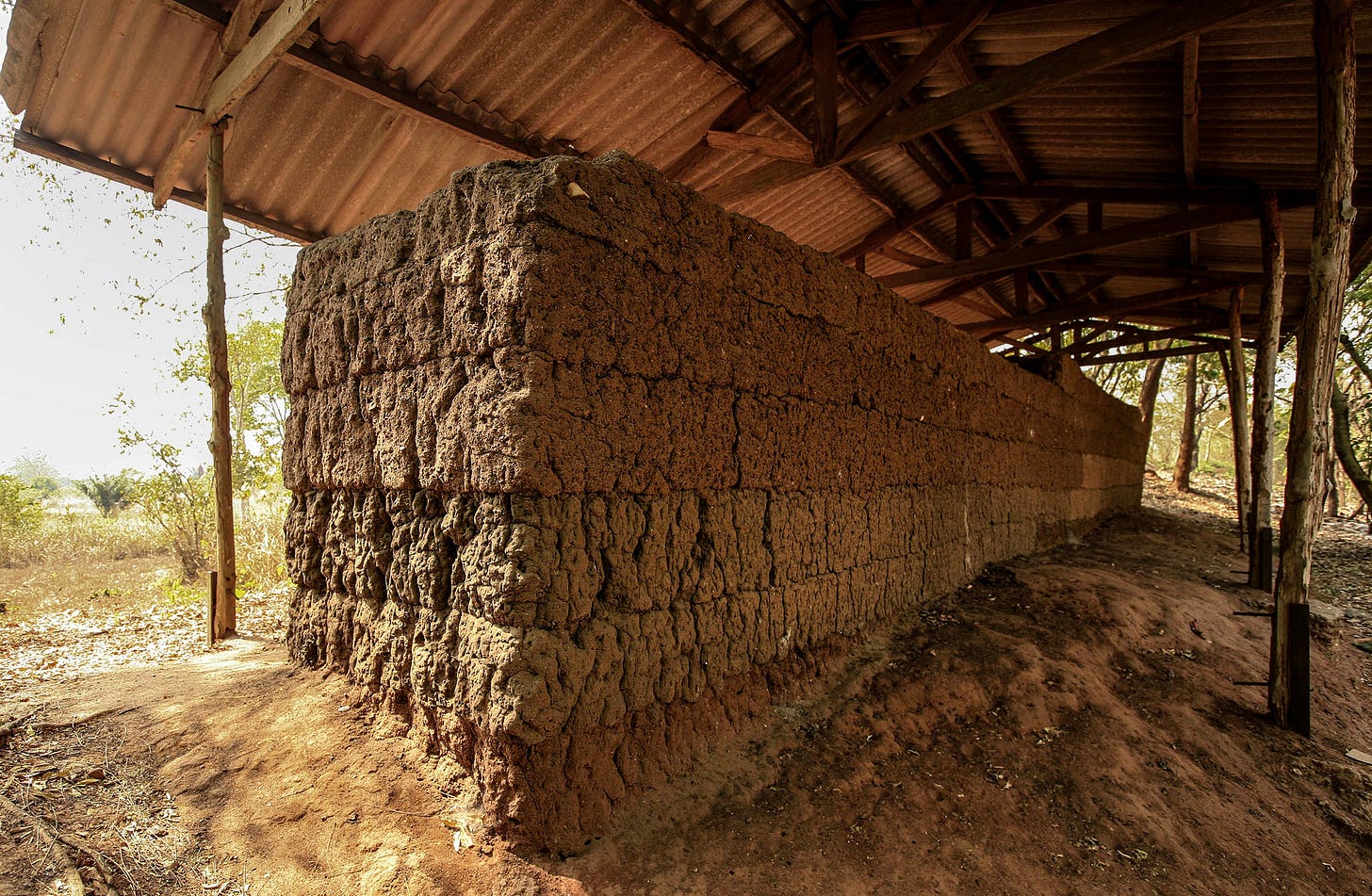'How I was fooled by 400-year-old fake news'
Rumours about the ‘tyrant’ who built Togo’s wall of Notsé were grossly exaggerated.
Maxime Koami Domegni

One night, about a year ago, I sat down to tell my children about our people. I am Ewe. We are a West African people who straddle several countries: an estimated 6-million in Ghana, 3-million in Togo, 600,000 in Benin, and a smaller group in Nigeria. When I sat the kids down, I told them a maliciously revised version of Ewe history. At 40 years old, even as a curious journalist, what I knew of my own people’s history was what German missionaries and colonisers had popularised.
I told my children that our ancestor Agokoli was a wicked, bloodthirsty king who built a wall with the blood of his subjects. I said that he forced them to knead clay mixed with thorns and other sharp objects with their bare feet and hands, and that the blood from their wounds is embedded in his most remarkable undertaking: the Agbogbo.
The Agbogbo was a 17th century perimeter wall in Notsé, a pre-colonial Togolese city-state about 100km north of the Atlantic coast. Part of the wall still stands today. In Togo, Ghana, or Benin, people tell a similarly cruel narrative about the wall’s construction. It is an account that was written, taught, and propagated for more than a century.
But modern research contests and complicates that account – as I have subsequently discovered. The details are explored in Les Ewe (Togo, Ghana, Bénin), Histoire et Civilisation, a study by leading Togolese historians edited by Nicoué Lodjou Gayibor.
In the early 17th century, Agokoli, a charismatic man, succeeded his father Ago as leader of the city-state of Notsé, and set out to build Agbogbo. It was “on the model of Romulus founding Rome by creating a ‘pomerium’ [boundary]”, states Les Ewe.
The 15.5km wall’s thickness varied between 6m and 8m, and it rose to heights of 2m to 2.5m, according to a 1980s archaeological study. It was an overwhelming undertaking given the technical capabilities of the time – and not necessarily a popular one.
The workers mobilised to build it became hostile. The friction was worsened by the fact that Agokoli’s advisors were already in open rebellion because the king – sometimes described as a revolutionary – was going well beyond the ceremonial role played by previous monarchs.
Political opposition arose in the kingdom, and disgruntled leaders led their followers to new lands, mainly towards the west. Begrudging their sovereign, the self-exiled dissidents began to speak of a tyrannical king they left behind, a one-sided account that modern historians now regard as an exaggeration.
Jesus enters the chat
The migration of dissident groups from Notsé came to be known as the “exodus of the Ewe”. Separately, some of our oral tradition says we came from Babylon, in Mesopotamia, after the break-up of the Babylonian empire several centuries before the birth of Jesus Christ.
Babylon, exodus...? Notice anything? The Ewe story became Christianised.
At the beginning of the 19th century, German missionaries landed among Ewe groups that had settled closer to the West African coast. This contact even preceded the start of the formal German colonisation of Togo. The men from Bremen were the first to write down Ewe history, and their accounts went on to become popular history. The 1,042-page Die Ewe-Stämme (The Ewe Communities), published in 1906 by a German pastor, is billed by Togolese historian Komla Etu as “the most voluminous study ever… of a people under German colonial rule”.
“This is the source of the very first written version of the famous legend of Agokoli, the ruler of Notsé deemed autocratic, bloodthirsty, and tyrannical,” Etu says. That’s how a 17th-century fake news story made its way to my children in the 2020s.
I am not the only person who regrets perpetuating the grotesque exaggeration. Today, a multinational association called Eweto works to reunite the Ewe. Formed in the early 1960s, after Ewe leaders met in Notsé, it organises a cultural gathering every September. The gathering is called Agbogbozan – festival of Agbogbo – and is the climax of several other Ewe festivals. Four hundred years later, the wall Agokoli built is bringing his people together.
In September 2014, community leaders delivered a mea culpa at that year’s Agbogbozan. “Chiefs went in delegation to the foot of the remains of the wall to officially ask forgiveness from Agokoli in the name of their ancestors who had abandoned Notsé, and in their personal names, for having slandered its memory for decades,” says Etu. This is the story I now tell my children.



